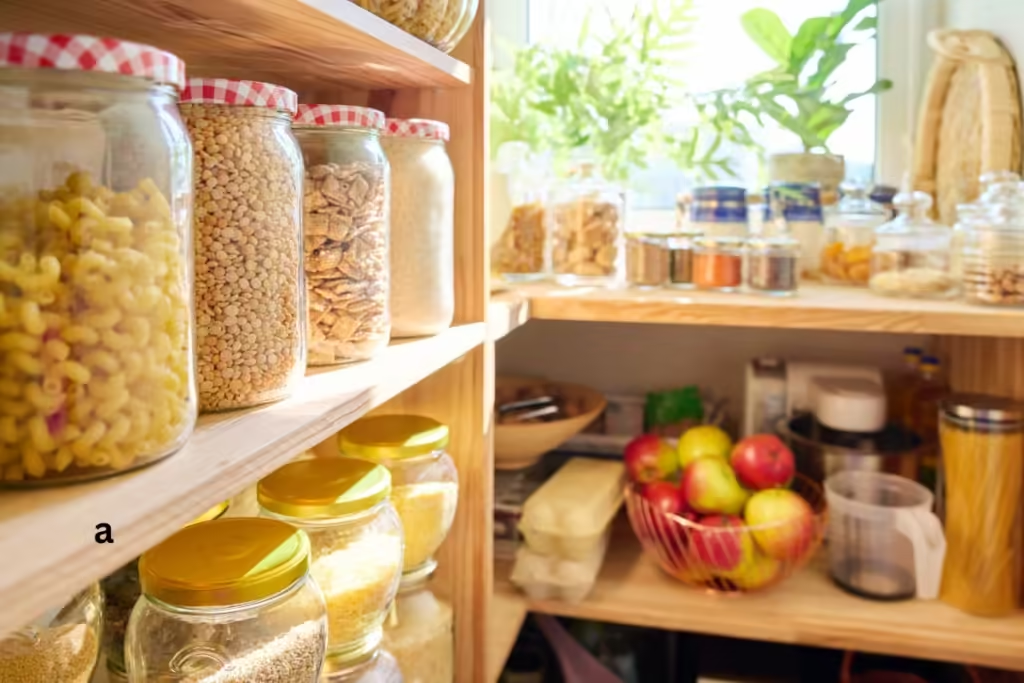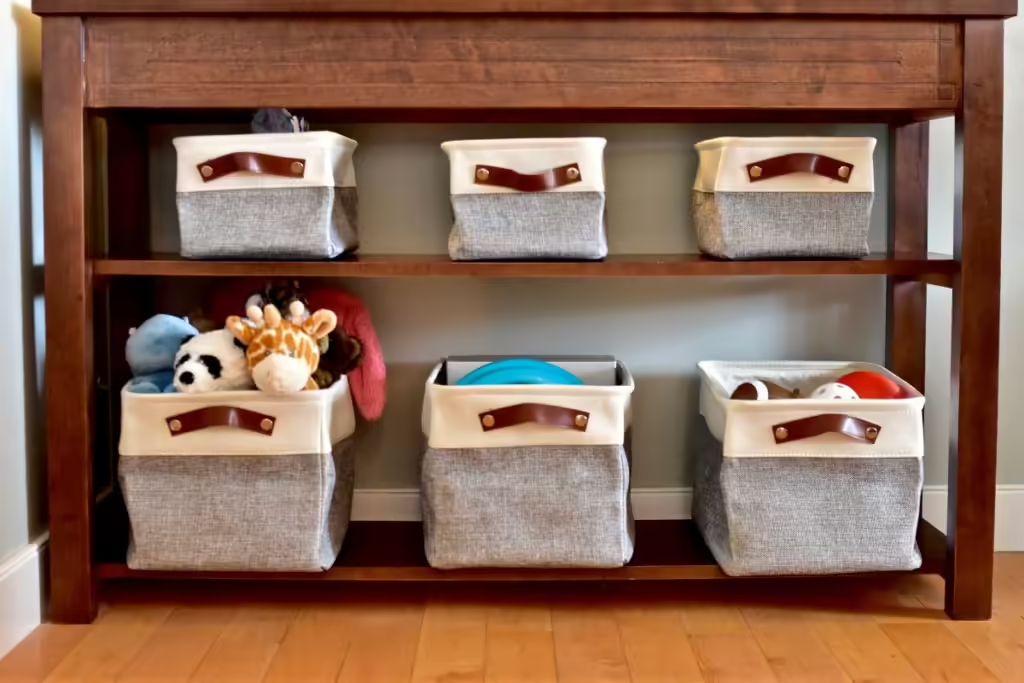
Building a Small Space: A Comprehensive Guide to Planning, Designing, and Living Efficiently
[et_pb_section fb_built=”1″ admin_label=”section” _builder_version=”4.16″ global_colors_info=”{}” theme_builder_area=”post_content”][et_pb_row admin_label=”row” _builder_version=”4.16″ background_size=”initial” background_position=”top_left” background_repeat=”repeat” global_colors_info=”{}” theme_builder_area=”post_content”][et_pb_column type=”4_4″ _builder_version=”4.16″ custom_padding=”|||” global_colors_info=”{}” custom_padding__hover=”|||” theme_builder_area=”post_content”][et_pb_text admin_label=”Text” _builder_version=”4.16″ background_size=”initial” background_position=”top_left” background_repeat=”repeat” global_colors_info=”{}” theme_builder_area=”post_content”]
Introduction
can be an exciting and rewarding journey, but it’s not without its challenges. Whether you’re dreaming of a cozy tiny home nestled in nature or planning a sleek, compact urban apartment, there’s something incredibly liberating about building a small space that perfectly suits your lifestyle. However, to turn that dream into reality, it’s crucial to approach the project with a well-thought-out plan. From budgeting and financing to selecting the right materials, every decision you make will have a significant impact on the success of your endeavor.

Why should you consider building a small space? For one, it allows you to embrace a minimalist lifestyle, focusing on what truly matters. With the rise of the tiny home movement, more people are discovering the benefits of living in a well-designed, efficient space that doesn’t compromise on comfort. Building a small space also offers environmental benefits, as smaller homes typically have a lower carbon footprint and require fewer resources to build and maintain.
But before you dive into the world of building a small space, it’s important to understand the intricacies involved. Proper planning is essential to ensure that your small space is not only functional but also meets all your needs and desires. This includes considering everything from zoning laws and location to the design and layout that will make the most of every square inch.
In this guide, we’ll walk you through the essential steps for building a small space that’s both practical and personalized. We’ll explore budgeting strategies, discuss the importance of selecting the right location, and delve into the creative process of designing a space that’s uniquely yours. Whether you’re a first-time builder or an experienced homeowner looking to downsize, our comprehensive guide will provide you with the insights and inspiration you need to make building a small space a successful and fulfilling experience.
So, if you’re ready to take the leap into the world of building a small space, let’s get started on this exciting adventure. With careful planning, smart choices, and a touch of creativity, you’ll soon be on your way to creating a small space that’s big on style and function.
Budgeting and Financing
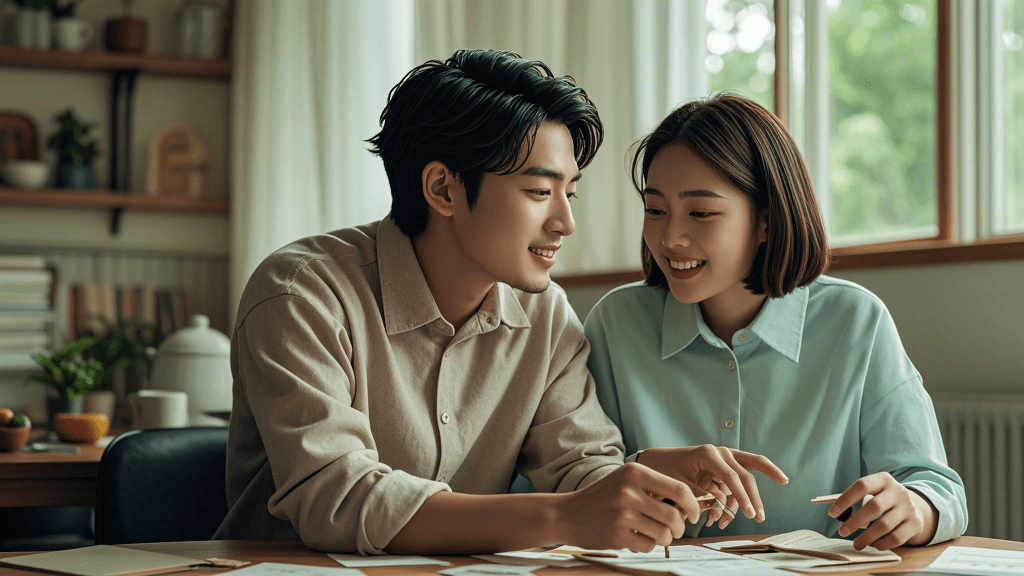
When embarking on the journey of building a small space, one of the most critical steps is understanding and managing your budget. Careful budgeting and financing are essential to ensure that your project stays on track and doesn’t end up costing more than expected. By analyzing initial costs and exploring various financing options, you can set a strong foundation for your small space project.
Analyzing Initial Costs
The first step in budgeting for building a small space is to get a clear picture of the initial costs. These upfront expenses will vary depending on the scope of your project, but there are a few key areas to consider:
- Land Purchase: The cost of land can significantly impact your budget. Whether you’re buying a plot in the countryside or a small lot in the city, it’s important to research prices in your desired area. Be sure to factor in any additional costs, such as property taxes or land surveys.
- Materials: The materials you choose for building a small space will play a major role in determining your overall budget. High-quality, sustainable materials may cost more upfront but can save money in the long run through durability and energy efficiency. Consider the cost of lumber, insulation, roofing, and finishes like flooring and paint.
- Labor: Unless you’re planning to build everything yourself, labor costs will be a significant part of your budget. Hiring skilled contractors and builders can ensure that your small space is constructed safely and to a high standard. Obtain multiple quotes and choose professionals with a solid reputation.
- Permits and Fees: Don’t forget to account for permits, inspections, and any other fees required by local authorities. These costs can add up quickly, so it’s important to include them in your initial budget.
Securing Financing Options
Once you’ve estimated the initial costs of building a small space, the next step is to secure financing. Depending on your financial situation, there are several options available:
- Loans: Traditional home loans, construction loans, or personal loans can provide the funding you need to get started. It’s important to shop around for the best interest rates and terms. If you’re building a tiny home, you may need to look for lenders that specialize in non-traditional homes.
- Grants: In some cases, you may be eligible for grants that can help offset the costs of building a small space. These grants are often available for sustainable or energy-efficient projects. Research what’s available in your area and see if your project qualifies.
- Savings Strategies: If you prefer to avoid debt, consider saving up for your project. This approach may take longer, but it allows you to build without the pressure of loan payments. Setting a budget and sticking to it can help you reach your savings goals faster.
By carefully analyzing your initial costs and exploring different financing options, you’ll be better equipped to manage the financial aspects of building a small space. This proactive approach will not only help you stay within budget but also give you peace of mind as you move forward with your project.
Location and Zoning Laws
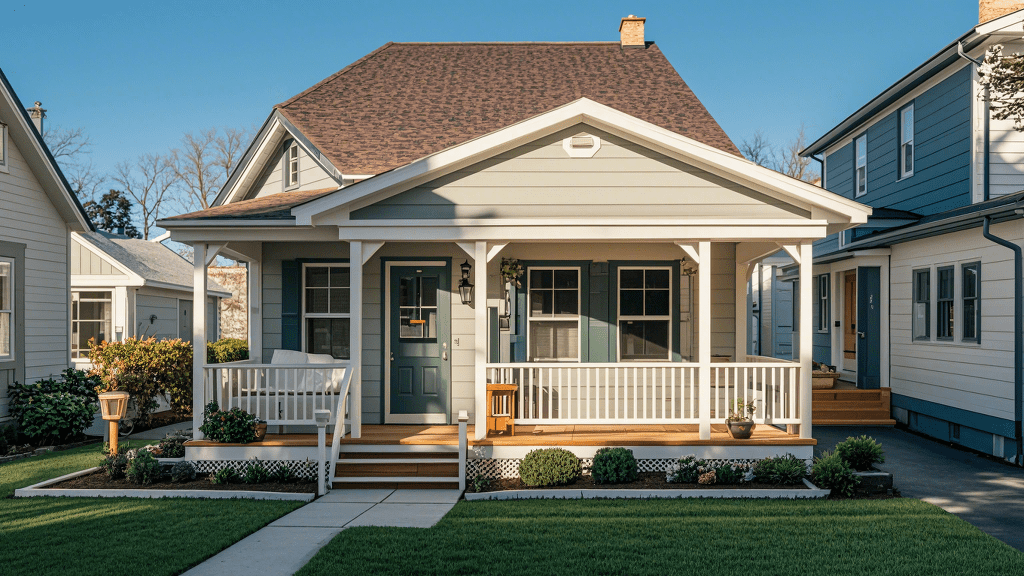
Choosing the right location and understanding zoning laws are crucial steps in the process of building a small space. The spot you select and the legal regulations governing it can significantly impact the feasibility, cost, and overall success of your project. By carefully considering these factors, you can ensure that your small space is both functional and compliant with local laws.
Choosing the Perfect Spot
Selecting the perfect location for building a small space involves more than just finding a plot of land. It requires careful consideration of several key factors:
- Accessibility: Ensure that your chosen location is easily accessible. Consider how close it is to essential services such as grocery stores, healthcare facilities, and public transportation. If you’re planning to live in a rural area, think about the proximity to main roads and how you’ll access your property in different weather conditions.
- Community: The surrounding community plays a significant role in your overall living experience. Research the neighborhood or area to determine if it aligns with your lifestyle and values. Are there like-minded individuals or families nearby? Is it a safe and welcoming environment? Community can provide a sense of belonging, which is especially important in a smaller living space.
- Natural Features: Look at the natural features of the land, such as sunlight exposure, drainage, and elevation. These factors can affect your home’s energy efficiency, comfort, and even the cost of construction. For instance, a plot with good sunlight exposure can help reduce heating costs, while proper drainage can prevent water-related issues.
- Future Development: Consider the potential for future development in the area. A quiet, scenic location might change if new roads or commercial buildings are constructed nearby. Check local development plans to understand what the future holds for your chosen spot.
Understanding Zoning Regulations
Zoning laws are a critical aspect of building a small space. These regulations dictate how land can be used in different areas, and they vary widely from one location to another:
- Zoning Classifications: Zoning laws typically classify land into categories such as residential, commercial, agricultural, or mixed-use. It’s important to ensure that your chosen location is zoned for the type of structure you plan to build. For example, a tiny home may not be allowed in certain residential zones.
- Setback Requirements: Zoning regulations often include setback requirements, which dictate how far your building must be from property lines, roads, or other structures. These requirements can limit the size and placement of your small space, so it’s essential to review them early in the planning process.
- Building Codes and Permits: In addition to zoning laws, you’ll need to comply with local building codes, which govern the construction, safety, and habitability of your small space. Obtaining the necessary permits is a crucial step that should not be overlooked. Failure to comply with these regulations can result in fines, delays, or even the demolition of your structure.
Navigating Legal Hurdles
Navigating the legal aspects of building a small space can be challenging, but with the right approach, you can overcome these hurdles:
- Research and Planning: Start by thoroughly researching the zoning laws and building codes in your area. Understanding these regulations will help you avoid costly mistakes and delays. Local government websites, planning offices, and legal professionals can provide valuable information.
- Consult with Experts: If you’re unsure about the legal requirements or need help navigating the process, consider consulting with an attorney or a local planning expert. These professionals can provide guidance on zoning issues, help you obtain the necessary permits, and advise you on how to address any legal challenges that arise.
- Community Involvement: Sometimes, building a small space can spark concerns among neighbors or community members. Being open and communicative about your plans can help build support and prevent disputes. Attend local meetings, engage with your neighbors, and be prepared to address any concerns they may have.
By carefully choosing the right location and understanding the zoning laws that apply, you can ensure that your small space project proceeds smoothly. With the right knowledge and preparation, you’ll be well-equipped to navigate the legal aspects of building a small space and create a home that’s both beautiful and compliant with all regulations.
Design and Layout Planning
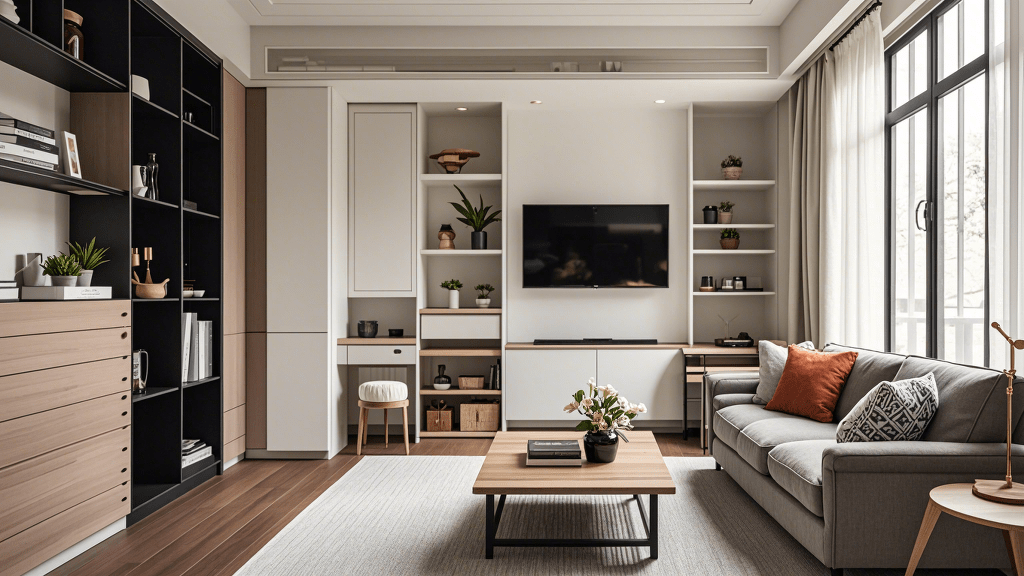
When it comes to building a small space, effective design and layout planning are key to creating a home that is both functional and stylish. By maximizing space efficiency, personalizing your design, and incorporating multi-functional furniture, you can ensure that every square inch of your small space works hard for you while reflecting your unique personality.
Maximizing Space Efficiency
Making the most of limited space is an art, and with the right strategies, you can transform even the smallest area into a comfortable and efficient living environment:
- Open Floor Plans: One of the best ways to maximize space efficiency is by opting for an open floor plan. By eliminating unnecessary walls, you can create a more spacious feel and improve the flow of your home. An open layout allows for more flexibility in arranging furniture and can make a small space feel much larger than it actually is.
- Smart Storage Solutions: Storage is often a challenge in small spaces, but with smart solutions, you can keep your home organized and clutter-free. Consider built-in shelves, under-bed storage, and vertical storage options that make use of every available inch. For example, floating shelves or wall-mounted cabinets can free up floor space while providing ample storage for your belongings.
- Multi-functional Areas: Designate areas of your home to serve multiple purposes. For instance, a kitchen island can double as a dining table or a workspace, and a sofa bed can serve as both seating and a sleeping area. By thinking creatively about how each space can be used, you can maximize functionality without sacrificing comfort.
- Lighting: Good lighting can also enhance the sense of space. Use a combination of natural light, task lighting, and ambient lighting to brighten up your small space. Mirrors strategically placed opposite windows can reflect light and make the room appear larger.
Personalizing Your Design
Just because you’re building a small space doesn’t mean you have to compromise on style. Personalizing your design is all about incorporating your tastes and preferences while keeping functionality in mind:
- Color Schemes: Choose a color scheme that reflects your personality and enhances the space. Lighter colors can make a room feel larger, while darker hues can add coziness and depth. Don’t be afraid to use bold accents or patterns to inject some personality into your small space.
- Decor and Accessories: Personalize your small space with decor and accessories that speak to you. Whether it’s artwork, throw pillows, or plants, these elements can add warmth and character to your home. However, be mindful of not overcrowding the space; opt for a few well-chosen pieces that add to the overall aesthetic without creating clutter.
- Custom Design Features: Consider adding custom design features that reflect your lifestyle. For example, if you’re an avid reader, built-in bookshelves can be both practical and a focal point of the room. If you love to cook, a compact but well-equipped kitchen with personalized touches can make the space feel uniquely yours.
- Textures and Materials: Incorporate a variety of textures and materials to add visual interest and depth. For instance, mixing wood, metal, and fabric can create a balanced and harmonious look, while still keeping the space functional.
Incorporating Multi-functional Furniture
Multi-functional furniture is a game-changer when it comes to building a small space. These versatile pieces can save space while adding style and utility to your home:
- Sofa Beds: A sofa bed is a classic example of multi-functional furniture that can serve as both a seating area during the day and a comfortable bed at night. It’s perfect for small spaces where a separate bedroom isn’t an option.
- Expandable Tables: An expandable dining table can be adjusted to fit different needs, from a compact table for everyday meals to a larger one for entertaining guests. When not in use, it can be folded down to save space.
- Storage Ottomans: A storage ottoman provides a place to sit, a surface to set things on, and hidden storage all in one. Use it to store blankets, books, or other items that would otherwise clutter your small space.
- Murphy Beds: A Murphy bed can be folded up into the wall when not in use, freeing up valuable floor space. Some designs even include additional storage or a fold-out desk, making it a perfect solution for multi-purpose rooms.
- Nesting Furniture: Nesting tables or chairs can be stacked or stored together when not in use, saving space and providing flexibility in how you use your small space.
By thoughtfully planning your design and layout, you can create a small space that’s efficient, personalized, and versatile. The right combination of space-saving strategies, personal touches, and multi-functional furniture will make your small space not only functional but also a true reflection of your style and needs.
Utilities and Resources
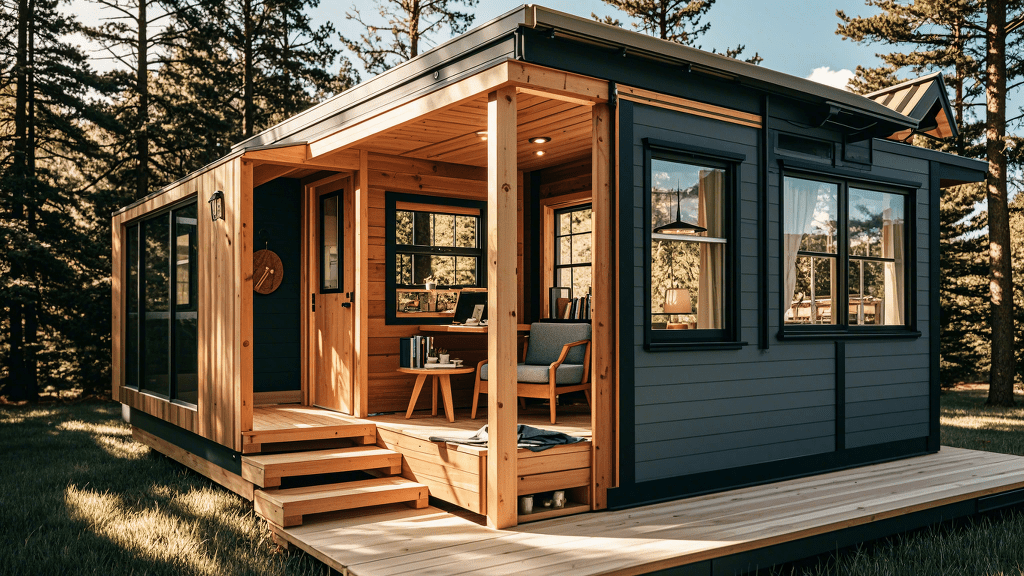
When building a small space, one of the most critical aspects to consider is how to manage utilities and resources efficiently. Ensuring that you have a reliable water supply, electricity, and an effective waste disposal system is essential for a comfortable and sustainable living environment. Whether you’re connected to city services or living off-grid, careful planning is key to meeting your daily needs without compromising on convenience or sustainability.
Planning for Water Supply
A reliable water supply is fundamental to any living space, and when building a small space, there are several options to consider:
- City Connections: If your small space is located within a city or suburban area, connecting to the municipal water supply may be the simplest option. This involves coordinating with local authorities to establish a water connection to your property. While this option is convenient, it’s important to understand the costs involved, including connection fees and ongoing water bills. Additionally, you should check the water pressure and quality to ensure it meets your needs.
- Well Water: For those building in rural areas, drilling a well might be necessary. This option provides a self-sufficient water supply, but it comes with upfront costs for drilling and maintaining the well. It’s also essential to test the water regularly for contaminants and to install a filtration system if needed. A well can offer a reliable source of water, but its sustainability depends on the groundwater levels in your area.
- Rainwater Harvesting: An increasingly popular option, especially for those interested in sustainable living, is rainwater harvesting. This system collects and stores rainwater for use in your home, reducing dependence on external water sources. Setting up a rainwater harvesting system involves installing gutters, downspouts, and storage tanks, as well as filters to ensure water quality. While this method can significantly reduce your water bills, it’s important to have a backup water source during dry periods.
- Greywater Systems: For additional water efficiency, consider implementing a greywater system, which recycles water from sinks, showers, and washing machines for irrigation or toilet flushing. This reduces the amount of fresh water needed for non-potable uses, further conserving your water resources.
Setting Up Electricity and Power
Whether you’re connected to the grid or living off-grid, setting up a reliable power system is crucial for building a small space:
- Grid Connection: If your small space is in an area with access to the electrical grid, connecting to it can be straightforward. This involves coordinating with the local utility company to set up a connection to your property. While this option provides consistent power, it’s important to consider the costs, including connection fees and monthly electricity bills. Additionally, you may want to explore energy-saving measures to reduce your consumption and costs.
- Solar Power: For those interested in off-grid living or reducing reliance on the grid, solar power is an excellent option. Installing solar panels on your roof or property can generate electricity from the sun, providing a sustainable and renewable energy source. While the initial investment in solar panels and batteries can be high, the long-term savings on electricity bills and the environmental benefits make it worthwhile. Ensure you size your solar system correctly based on your energy needs and consider including a backup generator for cloudy days or high energy demand.
- Wind Power: In areas with consistent wind, a small wind turbine can complement or even replace solar power as your primary energy source. Wind power is particularly effective in remote locations where the wind is strong and steady. Like solar, the upfront costs can be high, but the long-term savings and sustainability are significant benefits.
- Hybrid Systems: Combining solar and wind power can provide a more consistent energy supply, as these two sources often complement each other. A hybrid system ensures that you have power even when one source is less effective, such as during cloudy or calm days.
- Battery Storage: Whether you’re using solar, wind, or a hybrid system, battery storage is essential for storing excess energy generated during peak production times. This stored energy can be used when production is low, ensuring a continuous power supply.
Managing Waste Disposal
Effective waste management is a vital aspect of building a small space, particularly if you’re living off-grid:
- Septic Systems: If your small space isn’t connected to a municipal sewer system, installing a septic system is essential for managing wastewater. A septic system treats and disposes of sewage on-site, using a combination of a septic tank and a drain field. It’s important to size the system correctly based on your household’s needs and to maintain it regularly to prevent issues. Additionally, consider the environmental impact of your septic system and explore eco-friendly options like composting toilets or advanced treatment systems.
- Composting Toilets: For those interested in a more sustainable waste management solution, composting toilets are an excellent alternative. These toilets break down waste into compost that can be safely used in gardening or landscaping. Composting toilets are especially useful in off-grid settings where traditional plumbing isn’t feasible. They’re also water-saving, as they don’t require flushing.
- Recycling and Waste Reduction: Implementing a recycling system in your small space can significantly reduce the amount of waste you send to the landfill. Set up separate bins for recyclables such as paper, plastic, glass, and metal, and research local recycling programs to ensure proper disposal. Additionally, focus on reducing waste by composting organic materials and avoiding single-use items.
- Waste Disposal Services: If you’re connected to a municipal waste disposal service, coordinate with your local provider to set up regular trash and recycling pickups. Ensure that you’re aware of the types of waste accepted and any restrictions on disposal.
By carefully planning for water supply, electricity, and waste management, you can create a self-sufficient and sustainable small space. Whether you’re connected to city services or living off-grid, these utilities and resources are essential for ensuring that your small space is comfortable, functional, and environmentally friendly.
Building Materials and Construction Methods
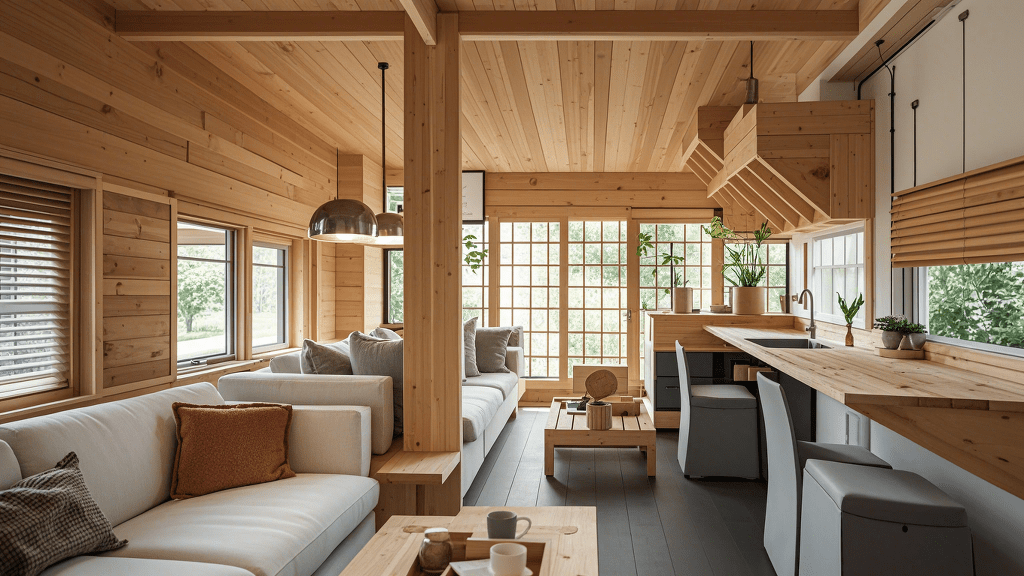
When building a small space, the choice of materials and construction methods plays a crucial role in ensuring durability, energy efficiency, and sustainability. By selecting eco-friendly materials and exploring different construction techniques, you can create a small space that not only meets your needs but also minimizes environmental impact.
Choosing Sustainable Materials
Opting for sustainable materials is an important step in creating an eco-friendly small space. These materials are not only better for the environment but also offer benefits in terms of durability, energy efficiency, and overall comfort:
- Bamboo: Bamboo is a rapidly renewable resource that is incredibly durable and versatile. It can be used for flooring, cabinetry, and even structural elements. Bamboo grows quickly, making it a sustainable choice, and it also has a high strength-to-weight ratio, making it ideal for small space construction.
- Reclaimed Wood: Using reclaimed wood is a great way to add character to your small space while being environmentally conscious. Reclaimed wood comes from old buildings, barns, or other structures and is repurposed for new construction. This not only reduces the demand for new lumber but also helps to preserve historical materials. Reclaimed wood can be used for flooring, wall panels, and furniture, adding a rustic and warm feel to your space.
- Recycled Steel: Steel is a highly durable material that can be recycled repeatedly without losing its strength. Using recycled steel in your small space construction reduces the need for new raw materials and helps minimize waste. Steel is also fire-resistant and can be used for structural components, roofing, and framing.
- Insulated Concrete Forms (ICFs): ICFs are forms made from recycled materials that are filled with concrete to create strong, energy-efficient walls. These forms provide excellent insulation, reducing the need for additional heating and cooling. ICFs are also durable and can withstand extreme weather conditions, making them an ideal choice for sustainable construction.
- Low-VOC Paints and Finishes: Traditional paints and finishes often contain volatile organic compounds (VOCs) that can off-gas harmful chemicals into your small space. Low-VOC or zero-VOC paints and finishes are a healthier alternative, reducing indoor air pollution and creating a safer environment for you and your family.
- Cork: Cork is another renewable resource that is harvested from the bark of cork oak trees without harming the tree. It’s an excellent material for flooring due to its softness, warmth, and sound insulation properties. Cork is also resistant to mold, mildew, and pests, making it a durable and low-maintenance option for small spaces.
- Green Roof Systems: A green roof, or living roof, is a roof that is partially or completely covered with vegetation. This not only provides insulation and reduces the heat island effect but also creates additional green space. Green roofs can help manage stormwater runoff, improve air quality, and provide a habitat for wildlife. They are particularly beneficial for urban small spaces where outdoor space is limited.
- Natural Insulation: Consider using natural insulation materials like sheep’s wool, cellulose, or hemp. These materials are effective at regulating temperature and moisture levels, contributing to a more comfortable and energy-efficient home. They’re also biodegradable and have a lower environmental impact than synthetic insulation materials.
Exploring Different Construction Methods
The construction method you choose can significantly impact the cost, timeline, and sustainability of your small space project. Here’s a comparison of some popular construction techniques:
- Prefab Construction: Prefabricated construction involves building sections of your small space in a factory and then transporting them to the site for assembly. This method is known for its efficiency, as much of the work is done in a controlled environment, reducing waste and delays caused by weather. Prefab construction can be more cost-effective and faster than traditional methods, and it also allows for high-quality control. However, customization options may be limited compared to on-site builds.
- Modular Construction: Modular construction is a type of prefab construction where the building is divided into modules or sections that are built in a factory and then assembled on-site. Each module is constructed to precise specifications, allowing for a high level of quality and consistency. Modular construction is flexible, as modules can be arranged in various configurations to suit your needs. This method is also faster and often more sustainable than traditional construction, as it reduces waste and energy use. However, transporting large modules to the site can be challenging, especially in remote areas.
- Traditional Stick-Built Construction: Traditional construction, also known as stick-built, involves building the entire structure on-site from the ground up. This method offers the most flexibility in terms of design and customization, allowing you to create a truly unique small space. However, traditional construction can be time-consuming and may be subject to delays due to weather or other unforeseen factors. It also tends to produce more waste compared to prefab or modular methods. Despite these challenges, traditional construction is often preferred for its craftsmanship and the ability to adapt to complex sites or designs.
- Tiny House on Wheels (THOW): If you’re looking for mobility, a tiny house on wheels (THOW) might be the right choice for your small space. These homes are built on trailers and can be moved from place to place, offering flexibility in terms of location. THOWs are typically built using lightweight materials to ensure they can be safely transported, and they often incorporate off-grid systems like solar panels and composting toilets. While living in a THOW requires downsizing and careful planning, it offers the freedom to travel and live in different environments.
- Earth-Sheltered Construction: Earth-sheltered homes are partially or completely built into the ground, providing natural insulation and protection from the elements. This construction method is highly energy-efficient, as the surrounding earth helps regulate indoor temperatures, reducing the need for heating and cooling. Earth-sheltered homes can blend seamlessly into the landscape and offer a unique and eco-friendly living experience. However, they require careful site selection and design to ensure proper drainage and prevent moisture issues.
- Shipping Container Homes: Repurposing shipping containers into small homes has become a popular trend due to the affordability, durability, and sustainability of this construction method. Shipping containers are made of steel, making them strong and resistant to harsh weather conditions. They can be stacked and arranged in various configurations to create a customized small space. However, converting a shipping container into a livable home requires insulation, cutting openings for windows and doors, and addressing potential issues with condensation and ventilation.
- Straw Bale Construction: Straw bale construction involves using bales of straw as the primary building material for walls. This method is highly sustainable, as straw is a renewable resource and provides excellent insulation. Straw bale homes are energy-efficient and can be finished with plaster or stucco for a durable and attractive appearance. While this method is less common, it offers a unique and eco-friendly alternative to conventional construction.
By choosing the right materials and construction method, you can create a small space that is not only functional and comfortable but also environmentally responsible. Whether you opt for prefab construction with sustainable materials or a more traditional approach with eco-friendly finishes, your choices will have a lasting impact on the sustainability and efficiency of your small space.
Related:
Outdoor Oasis: Transform Your Backyard into a Serene Retreat with Inspiring Design Ideas and Practical Tips
Space Optimization Strategies
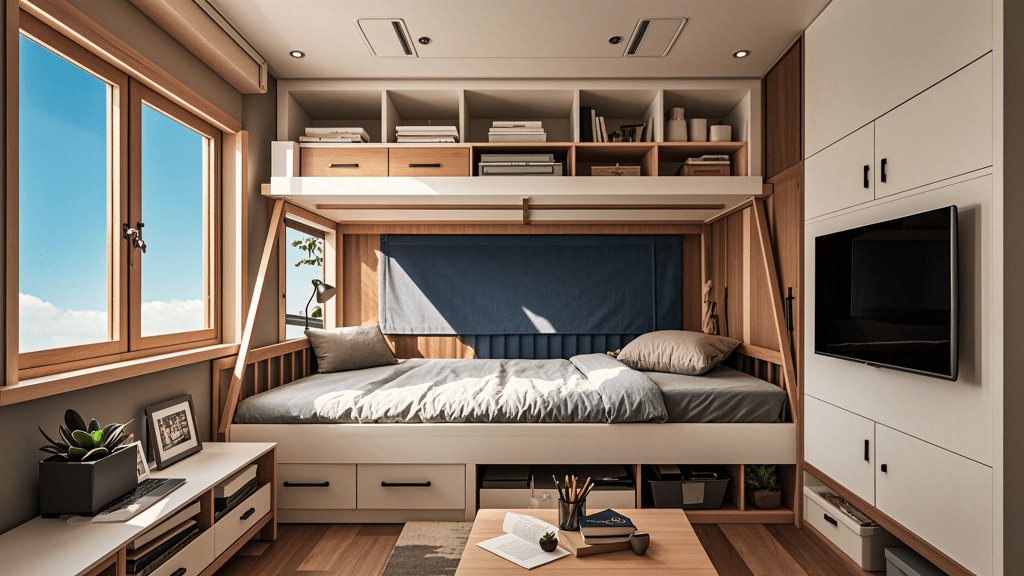
Making the most of a small space requires a thoughtful approach to design and organization. By embracing decluttering, minimalism, and creative storage solutions, you can transform even the smallest area into a functional and comfortable living space.
Decluttering and Minimalism
When it comes to maximizing space, decluttering is the first and most essential step. A clutter-free environment not only makes a space feel larger but also promotes a sense of calm and order. Here’s how to tackle clutter and embrace minimalism:
- Start with a Purge: Go through your belongings and assess what you truly need and use. Let go of items that no longer serve a purpose, whether it’s clothes you haven’t worn in years or kitchen gadgets collecting dust. Donate, sell, or recycle these items to free up space and give them a second life elsewhere.
- Adopt a “One In, One Out” Rule: For every new item you bring into your space, commit to removing one. This practice helps maintain a balance and prevents clutter from creeping back in. Whether it’s a new piece of clothing or a kitchen utensil, think carefully before adding anything to your collection.
- Embrace Multi-functional Furniture: Invest in pieces that serve more than one purpose, such as a sofa bed, a dining table that doubles as a workspace, or an ottoman with hidden storage. Multi-functional furniture reduces the need for multiple items, saving space while adding versatility to your home.
- Keep Surfaces Clear: Clear surfaces instantly make a space feel larger and more organized. Limit the number of items on countertops, tables, and shelves to only what is necessary. Decorative items should be kept to a minimum, focusing on a few meaningful pieces rather than cluttering the space with numerous knick-knacks.
- Simplify Your Decor: Minimalism isn’t just about reducing physical items; it’s also about creating a serene and cohesive environment. Choose a neutral color palette and limit the number of patterns and textures in your space. A simple, uncluttered aesthetic will make your small space feel open and airy.
- Digitize Where Possible: Consider going digital to reduce the need for physical storage. This could mean scanning important documents, switching to e-books, or storing photos in the cloud. By digitizing, you can significantly cut down on paper clutter and free up valuable space.
- Prioritize Quality Over Quantity: In a minimalist space, every item should have a purpose and be of high quality. Invest in fewer, better-made pieces that will last longer and bring more value to your life. This approach not only reduces clutter but also fosters a sense of satisfaction and contentment with your space.
- Daily Maintenance: Finally, maintaining a decluttered and minimalist space requires consistent effort. Set aside time each day to tidy up and put things back in their designated places. Regularly assess your belongings to ensure you’re not accumulating unnecessary items.
Creative Storage Solutions
Once you’ve decluttered, it’s time to focus on creative storage solutions that make the most of every inch of your space. Here are some innovative ideas to help you maximize storage without compromising on style:
- Built-in Shelves: Built-in shelves are a great way to add storage without taking up valuable floor space. They can be installed in almost any room, from the living room to the bathroom, and offer a sleek and streamlined look. Use them to store books, display decor, or keep everyday items within easy reach.
- Under-Bed Storage: The space under your bed is prime real estate for storage. Consider investing in under-bed storage containers or drawers to keep items like extra bedding, seasonal clothing, or shoes out of sight but easily accessible. For an even more streamlined look, opt for a bed with built-in storage drawers.
- Hidden Compartments: Hidden storage compartments are a clever way to keep clutter out of sight while maintaining a clean and tidy appearance. Look for furniture with hidden compartments, such as coffee tables with lift-up tops, ottomans with storage space inside, or mirrors that open to reveal storage behind them.
- Vertical Storage: When floor space is limited, think vertically. Use tall bookshelves, wall-mounted cabinets, or hanging organizers to make the most of your wall space. Vertical storage solutions keep items off the floor and create a sense of height in the room, making it feel more spacious.
- Multipurpose Furniture: As mentioned earlier, multipurpose furniture is key to optimizing a small space. Look for pieces that combine storage with functionality, such as a bed with built-in drawers, a dining table with shelves underneath, or a bench with hidden storage. These items help you save space while keeping your home organized.
- Floating Shelves: Floating shelves are a stylish and space-saving solution for displaying items or storing essentials. They can be installed in any room, including the kitchen, bathroom, or living area. Use them to keep frequently used items within reach or to showcase your favorite decor pieces without taking up floor space.
- Over-the-Door Organizers: Don’t overlook the space behind your doors. Over-the-door organizers are perfect for storing shoes, accessories, cleaning supplies, or even pantry items. They’re easy to install and can be used in almost any room, making them a versatile storage solution.
- Corner Shelves: Make use of often-overlooked corners by installing corner shelves. These shelves provide extra storage without taking up much space and can be used to display decor, store books, or hold small items. They’re especially useful in small bathrooms, kitchens, or living rooms.
- Hooks and Pegboards: Hooks and pegboards are a practical and flexible way to store items vertically. Install them in your entryway, kitchen, or bathroom to hang bags, utensils, towels, or tools. Pegboards can be customized with various hooks, shelves, and baskets to suit your storage needs.
- Rolling Carts: Rolling carts are a versatile storage solution that can be easily moved around as needed. Use them in the kitchen to store pantry items, in the bathroom for toiletries, or in the living room as a mobile bar cart. Their compact size makes them ideal for small spaces, and they can be tucked away when not in use.
- Mirror Cabinets: Maximize your bathroom storage by installing a mirror cabinet above the sink. These cabinets offer hidden storage for toiletries and medicine while serving as a functional mirror. They’re a smart way to add storage in a small bathroom without taking up extra space.
- Nesting Furniture: Nesting furniture is a great way to save space while maintaining functionality. Look for nesting tables, stools, or storage boxes that can be stacked or tucked away when not in use. These pieces are perfect for small living rooms, bedrooms, or home offices.
By incorporating these creative storage solutions into your small space, you can keep your home organized, clutter-free, and functional. Whether you choose built-in shelves, under-bed storage, or multipurpose furniture, these strategies will help you make the most of your limited space.
Climate Considerations
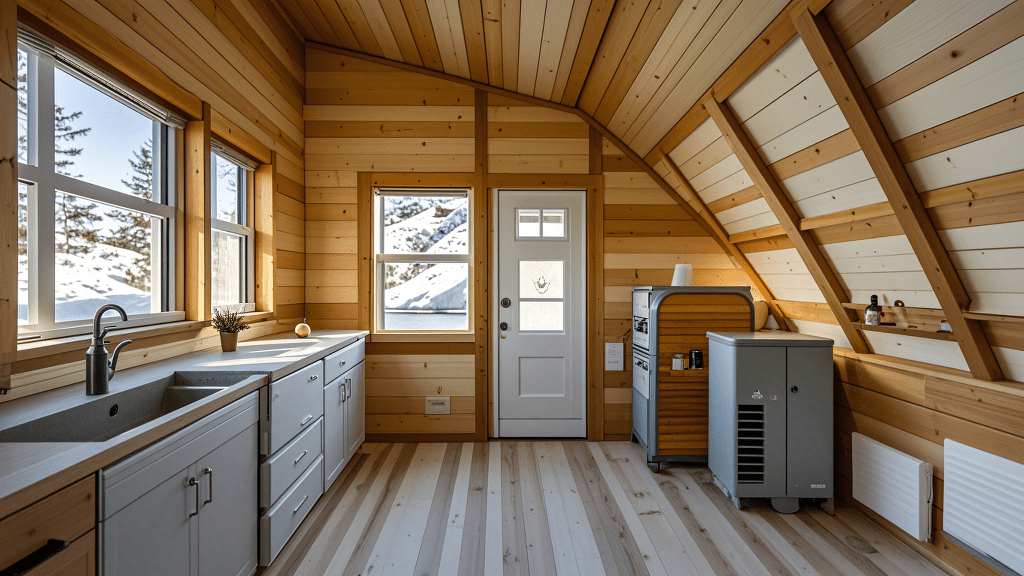
When designing and building a small space, paying attention to climate considerations is crucial for ensuring comfort, durability, and energy efficiency. Proper insulation, weatherproofing, and ventilation are key factors in creating a living environment that is not only cozy but also sustainable and healthy.
Insulation and Weatherproofing
Insulation and weatherproofing are foundational elements in maintaining a comfortable and energy-efficient home, regardless of its size. Here’s why they’re essential and how to approach them in your small space:
- Maintaining Comfort: Proper insulation helps regulate the temperature inside your home, keeping it warm in the winter and cool in the summer. Without adequate insulation, your small space could become unbearably cold in the winter or excessively hot in the summer, leading to discomfort and increased energy use. Insulating the walls, floors, and roof is essential to creating a stable indoor environment where you can relax and thrive.
- Energy Efficiency: By preventing heat from escaping in the winter and keeping cool air inside during the summer, insulation significantly reduces the amount of energy required to heat or cool your home. This not only lowers your utility bills but also reduces your carbon footprint, making your small space more environmentally friendly.
- Types of Insulation: There are various insulation materials to choose from, each with its benefits. Fiberglass is one of the most common types, known for its affordability and ease of installation. Spray foam insulation is another option, offering superior air sealing and thermal resistance. For a more eco-friendly approach, consider recycled cotton or sheep’s wool, both of which provide excellent insulation while being sustainable and non-toxic.
- Weatherproofing: Beyond insulation, weatherproofing your small space is essential to protect it from the elements. Weatherproofing involves sealing gaps, cracks, and openings where air and moisture can enter. This not only prevents drafts but also protects your home from water damage, mold, and pests. Start by inspecting doors, windows, and any other openings for gaps that need sealing. Use caulk or weatherstripping to seal these areas and consider installing storm doors or windows for added protection.
- Moisture Control: Moisture is a significant concern in any small space, as it can lead to mold growth, structural damage, and poor indoor air quality. Proper weatherproofing helps prevent moisture from entering your home, but it’s also essential to manage humidity levels inside. Using a dehumidifier, especially in humid climates, can help keep moisture levels in check, protecting both your health and your home.
- Roof and Foundation: Don’t forget to insulate and weatherproof your roof and foundation, as these areas are critical to your home’s overall energy efficiency and durability. Ensure that your roof is properly sealed and that any potential leak points are addressed. For the foundation, consider adding a moisture barrier to prevent water infiltration and improve insulation.
- Energy-Efficient Windows and Doors: Investing in energy-efficient windows and doors can further enhance your home’s insulation and weatherproofing. Look for windows with double or triple glazing and low-E coatings to minimize heat loss and gain. Similarly, choose doors with good insulating properties to prevent drafts and improve overall energy efficiency.
By focusing on insulation and weatherproofing, you can create a small space that is comfortable, energy-efficient, and protected from the elements. These measures will not only enhance your quality of life but also contribute to a more sustainable and eco-friendly lifestyle.
Ventilation and Air Circulation
In a small space, proper ventilation and air circulation are vital to maintaining good indoor air quality and preventing issues like moisture buildup and mold. Here’s how to ensure your home has adequate ventilation:
- Importance of Ventilation: Proper ventilation is essential for removing stale air, pollutants, and excess moisture from your home. Without it, indoor air quality can deteriorate, leading to health issues such as allergies, respiratory problems, and headaches. In a small space, where air can become stagnant more quickly, ventilation is especially crucial.
- Natural Ventilation: Whenever possible, incorporate natural ventilation into your design. This can be achieved through the strategic placement of windows, doors, and vents that allow fresh air to flow through your home. Consider using cross-ventilation techniques, where windows or vents are placed on opposite sides of the room to create a natural airflow. This not only improves air quality but also helps regulate indoor temperature.
- Mechanical Ventilation: In some cases, natural ventilation may not be sufficient, especially in areas with high humidity or poor air quality. Mechanical ventilation systems, such as exhaust fans, air exchangers, or whole-house ventilation systems, can help ensure consistent airflow and remove excess moisture. Exhaust fans in the kitchen and bathroom are particularly important for removing steam, cooking odors, and other pollutants.
- Preventing Moisture Buildup: Moisture buildup can lead to serious problems like mold growth, wood rot, and structural damage. To prevent this, ensure your small space has adequate ventilation in areas prone to moisture, such as the bathroom, kitchen, and laundry area. Use exhaust fans and dehumidifiers as needed, and make sure to regularly inspect and maintain these systems.
- Air Circulation: Good air circulation is just as important as ventilation in maintaining a healthy indoor environment. Ceiling fans and portable fans can help circulate air throughout your space, preventing it from becoming stagnant. In addition to improving comfort, good air circulation also helps distribute heat and cool air more evenly, reducing the need for additional heating or cooling.
- Ventilation in Tight Spaces: In small, tightly sealed spaces, ventilation can be a challenge. If your home is well-insulated and airtight, consider installing an air exchange system that brings in fresh air while expelling stale air. This type of system is particularly useful in reducing indoor pollutants and maintaining good air quality year-round.
- Maintaining Air Quality: In addition to ventilation and air circulation, maintaining good indoor air quality involves minimizing the use of chemicals and pollutants inside your home. Use non-toxic cleaning products, avoid synthetic materials that off-gas, and consider adding indoor plants that can help filter the air naturally.
- Seasonal Considerations: Your ventilation needs may vary depending on the season. In the winter, you’ll want to minimize heat loss while still ensuring fresh air enters your home. In the summer, focus on maximizing airflow to keep your space cool. Be mindful of these seasonal changes and adjust your ventilation strategies accordingly.
By prioritizing ventilation and air circulation, you can create a small space that is not only comfortable but also healthy and free from moisture-related issues. Whether through natural or mechanical means, ensuring good airflow in your home will enhance your overall living experience.
Lifestyle and Daily Living
Adapting to a compact living environment requires a shift in mindset, habits, and routines. While small space living can present challenges, it also offers unique opportunities to simplify your life and focus on what truly matters. By embracing the changes that come with downsizing, you can create a cozy, functional, and fulfilling home environment.
Adjusting to Compact Living
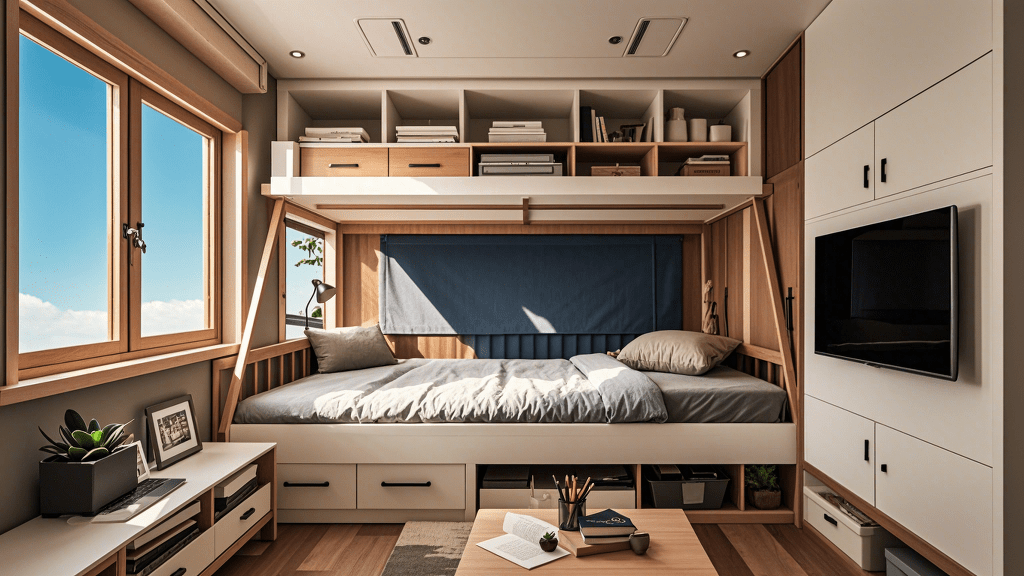
Adjusting to compact living involves more than just fitting your belongings into a smaller space; it’s about embracing a lifestyle that prioritizes simplicity, efficiency, and intentionality. Here’s how to make the transition smoother:
- Embrace Minimalism: One of the key aspects of adjusting to compact living is adopting a minimalist mindset. This doesn’t mean you have to get rid of everything you own, but rather focus on keeping only the items that add value to your life. By decluttering and simplifying your possessions, you can create a space that feels more open, organized, and peaceful. Start by evaluating your belongings and identifying which items you use regularly and which ones are just taking up space. Letting go of unnecessary items can be liberating and make your small space more functional.
- Maximize Your Space: In a small living environment, every square foot counts. Get creative with how you use your space by incorporating multi-functional furniture, built-in storage solutions, and smart layouts. For example, consider using a sofa bed in your living room to serve as both seating and a guest bed. Use vertical space by installing shelves or cabinets that reach up to the ceiling, and invest in furniture that doubles as storage, such as ottomans with hidden compartments. By making the most of your available space, you can live comfortably without feeling cramped.
- Focus on Quality Over Quantity: When space is limited, it’s essential to be selective about the items you bring into your home. Prioritize quality over quantity, choosing pieces that are well-made, durable, and versatile. This applies not only to furniture and decor but also to clothing, kitchenware, and other everyday essentials. By investing in high-quality items that serve multiple purposes, you can reduce clutter and make your home more functional.
- Create Zones for Different Activities: Even in a small space, it’s important to designate specific areas for different activities, such as sleeping, working, eating, and relaxing. Creating distinct zones helps you maintain a sense of order and balance in your home, making it easier to transition between tasks. For example, set up a cozy reading nook in a corner with a comfortable chair and good lighting, or create a small workspace with a desk and storage for your office supplies. By organizing your space in this way, you can make the most of your limited square footage.
- Prioritize Comfort and Functionality: While it’s important to maximize your space, don’t sacrifice comfort or functionality. Choose furniture and decor that are both practical and cozy, ensuring your home feels inviting and livable. Opt for soft textiles, such as throw blankets, pillows, and rugs, to add warmth and texture to your space. Make sure your seating is comfortable and supportive, and consider adding plants or artwork to bring life and personality to your home.
- Adapt to a Slower Pace of Life: Living in a smaller space often means embracing a slower, more intentional pace of life. Without the distractions of excess belongings or a sprawling home to maintain, you may find it easier to focus on what’s most important to you. Take this opportunity to simplify your routines, spend more time on hobbies or activities you enjoy, and cultivate a sense of mindfulness in your daily life.
By embracing these strategies, adjusting to compact living can be a rewarding experience that brings greater simplicity, efficiency, and peace into your life. Remember, it’s not about the size of your space, but how you use it that truly matters.
Adapting Routines and Habits
Adapting routines and habits is a crucial part of thriving in a compact living environment. Here are some tips on how to modify your daily routines to better fit your new lifestyle:
- Streamline Your Morning Routine: In a small space, it’s important to keep your morning routine efficient and clutter-free. Start by organizing your bathroom and bedroom so that everything you need is easily accessible. Use drawer organizers or baskets to keep toiletries, makeup, and accessories in order. Consider simplifying your skincare and makeup routine to just a few essential products. By streamlining your morning routine, you can start your day feeling calm and organized.
- Cook and Eat Mindfully: With a smaller kitchen, you’ll need to adapt your cooking and eating habits. Focus on preparing simple, healthy meals that don’t require a lot of space or equipment. Plan your meals in advance to minimize the need for excessive pantry items or kitchen gadgets. Use compact, multi-functional appliances, such as a slow cooker or an instant pot, to save space and time. When it’s time to eat, consider setting up a small dining area where you can enjoy your meals without distractions.
- Maintain a Clean and Tidy Space: In a compact living environment, keeping your space clean and tidy is essential for maintaining a sense of order and well-being. Develop daily habits like making your bed, doing the dishes, and tidying up before bed. Set aside time each week for deeper cleaning tasks, such as vacuuming, dusting, and laundry. By staying on top of chores, you can prevent clutter and mess from taking over your space.
- Create a Relaxing Evening Routine: End your day with a relaxing evening routine that helps you unwind and prepare for sleep. Create a cozy atmosphere by dimming the lights, lighting candles, or playing soft music. If you enjoy reading, set up a comfortable spot where you can relax with a good book. Limit screen time before bed to promote better sleep quality. A consistent evening routine can help you relax and recharge for the next day.
- Simplify Your Wardrobe: A smaller closet means you’ll need to be more intentional about your clothing choices. Consider creating a capsule wardrobe with versatile, timeless pieces that can be mixed and matched. Store off-season clothing in under-bed storage or vacuum-sealed bags to save space. When shopping for new clothes, choose quality items that you love and will wear often, rather than buying on impulse. Simplifying your wardrobe can make getting dressed easier and reduce the need for storage space.
- Incorporate Mindfulness Practices: Adapting to compact living can be an opportunity to incorporate mindfulness practices into your daily routine. Whether it’s practicing yoga, meditation, or journaling, these activities can help you stay centered and focused in a smaller space. Set aside a quiet corner in your home where you can engage in these practices without distractions. By making mindfulness a part of your routine, you can cultivate a sense of peace and well-being in your compact living environment.
By adapting routines and habits to fit your compact living space, you can create a lifestyle that is both functional and fulfilling. Embrace the opportunity to simplify, streamline, and focus on what truly matters, and you’ll find that living in a smaller space can be a rewarding experience.
Conclusion
Living in a small space presents unique opportunities to embrace a simpler, more intentional lifestyle. By focusing on space optimization, climate considerations, and lifestyle adjustments, you can transform your compact living environment into a functional, comfortable, and stylish home.
As you navigate the challenges of compact living, remember that the key to success lies in creativity and efficiency. Utilize multi-functional furniture and smart storage solutions to make the most of every inch. Embrace minimalism to reduce clutter and create a serene, organized space that reflects your personal style.
Pay careful attention to climate considerations such as insulation, weatherproofing, and ventilation to maintain a healthy and energy-efficient home. Proper planning for utilities and resources ensures that your small space remains comfortable and functional, while choosing sustainable materials and exploring various construction methods contributes to a more eco-friendly lifestyle.
Adapting your daily routines and habits will help you thrive in your compact living environment. Simplify your routines, prioritize comfort, and make mindful choices to enhance your quality of life. By focusing on what truly matters and embracing the joys of small space living, you can create a home that is not only functional but also truly fulfilling.
In summary, small space living is about finding balance and making the most of what you have. With thoughtful planning and a positive mindset, your compact home can become a sanctuary that supports your lifestyle and enhances your well-being. Embrace the journey, and let your small space shine with creativity and purpose.
FAQs
1. How can I make a small space feel larger?
To make a small space feel larger, focus on maximizing natural light and using mirrors to reflect light and create the illusion of more space. Opt for light colors on walls and furniture to keep the area feeling airy. Incorporate multi-functional furniture, such as storage ottomans or fold-out tables, to maximize usability without overcrowding. Keep the space decluttered and organized to maintain an open, spacious feel.
2. What are the best storage solutions for small spaces?
Effective storage solutions for small spaces include using vertical space with wall-mounted shelves, incorporating under-bed storage, and utilizing multi-functional furniture with built-in storage. Consider using closet organizers, stackable bins, and drawer dividers to keep items neatly arranged. Hooks and hanging racks can also help utilize wall space for storing accessories and everyday items.
3. How do I handle climate control in a small space?
Proper climate control in a small space involves ensuring adequate insulation and weatherproofing to maintain comfortable temperatures and improve energy efficiency. Use weatherstripping to seal gaps around windows and doors. Invest in energy-efficient windows and consider using a dehumidifier to manage moisture levels. Ventilation is key to maintaining good air quality, so use exhaust fans and ensure proper airflow throughout the space.
4. What are some space-saving tips for small kitchens?
In small kitchens, prioritize space-saving techniques such as using compact appliances, installing wall-mounted shelves, and incorporating pull-out cabinets or drawers. Use the inside of cabinet doors for additional storage with racks or organizers. Opt for stackable cookware and utensils to maximize storage efficiency. Consider a fold-down table or extendable counter to save space when not in use.
5. How can I personalize a small living space without making it feel cluttered?
To personalize a small living space, focus on a few key decor pieces that reflect your style without overwhelming the space. Use artwork, textiles, and accessories to add color and character. Choose multi-purpose furniture and decor items that provide both functionality and aesthetic appeal. Incorporate plants for a touch of nature and use vertical space for display items to keep surfaces clear and uncluttered.
6. What are some common mistakes to avoid in small space living?
Common mistakes in small space living include overfilling the space with furniture and decor, neglecting to declutter regularly, and using dark colors that can make the space feel smaller. Avoid blocking natural light with heavy curtains or bulky furniture. Additionally, be mindful of not overloading your space with items you don’t use or need, as this can lead to a cramped and disorganized environment.
7. How can I make my small space more energy-efficient?
To make your small space more energy-efficient, focus on improving insulation and weatherproofing to reduce heat loss or gain. Use energy-efficient lighting, such as LED bulbs, and opt for appliances with high energy ratings. Implement a programmable thermostat to regulate heating and cooling efficiently. Additionally, practice energy-saving habits, such as turning off lights and unplugging electronics when not in use.
8. What are some strategies for adjusting to small space living?
Adjusting to small space living involves embracing minimalism, simplifying your belongings, and finding creative solutions for everyday needs. Develop efficient routines and habits to keep the space organized and clutter-free. Focus on multi-functional furniture and storage solutions to optimize the space you have. Lastly, create a comfortable and personalized environment by incorporating elements that make the space feel like home.
References
- Home Design Journal – homedesignjournal.com
- Building Today Magazine – buildingtodaymagazine.com
- Green Building Resources – greenbuildingresources.org
- Small Space Living Blog – smallspacelivingblog.com
- Eco Living Magazine – ecolivingmagazine.com
- Simple Living Tips – simplelivingtips.com
- Financial Planning Journal – financialplanningjournal.com
- Interior Design Today – interiordesigntoday.com
[/et_pb_text][/et_pb_column][/et_pb_row][/et_pb_section]

